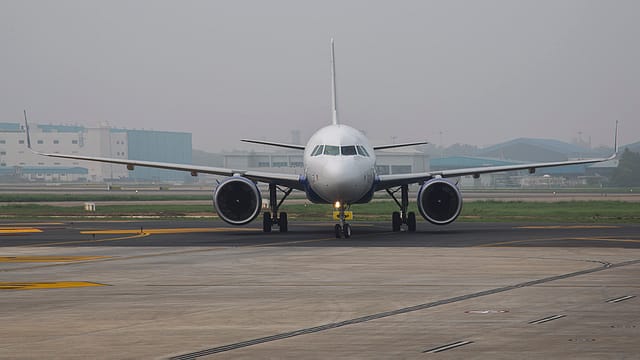Domestic airlines flew 12% more passengers in November
ADVERTISEMENT

India’s domestic carriers flew 1.42 crore passengers in November, up 12% year-on-year compared with 1.27 crore passengers in the same month last year, according to data shared by aviation regulator Directorate General of Civil Aviation (DGCA).
IndiGo cornered a market share of 63.5% by flying 90.70 lakh passengers on domestic flights. Air India carried 34.73 lakh passengers, accounting for 24.3% market share. Vistara, which was operational till November 11 before its merger with Air India, had 2.9% market share. Akasa Air flew 6.7 lakh passengers and accounted for about 4.7% market share while SpiceJet flew 4.43 lakh passengers, cornering 3% market share.
Passengers carried by domestic airlines during January - November 2024 were 14.64 crore as against 13.82 crore during the corresponding period of the previous year, thereby registering an annual growth of 5.91%.
Akasa Air reported the highest passenger load factor - the carrying capacity which is being utilised - of 92.6% in November, followed by IndiGo at 90.3%. Air India’s passenger load factor stood at 87.3%.
The overall cancellation rate of scheduled domestic airlines for the month of November 2024 has been 1.25%. Fly Big witnessed the highest number of cancellations at 36.7%, followed by Alliance Air at 4.2%.
During November, a total of 624 passenger related complaints had been received by the scheduled domestic airlines. The number of complaints per 10,000 passengers carried for the month of November 2024 has been around 0.44. FlyBig received the maximum number of complaints followe by SpiceJet, Star Air and Alliance Air respectively. The major reasons for complaints is flight problem related followed by baggage and refunds.
December 2025
The annual Fortune 500 India list, the definitive compendium of corporate performance, is out. This year, the cumulative revenue of the Fortune 500 India companies has breached $2 trillion for the first time. Plus, find out which are the Best B-schools in India.
Rating agency ICRA expects the Indian aviation industry to report a net loss of ₹2,000-3,000 crore in FY25 and FY26 compared to a net profit of ₹1,600 crore in FY24 due to anticipated pressure on yields as airlines strive to maintain adequate PLF amid continued elevated ATF prices.
The industry witnessed improved pricing power during FY24, reflected in the higher yields (over pre-Covid levels) and, the revenue per available seat kilometre–cost per available seat kilometre (RASK–CASK) spread of the airlines, the rating agency says.
The momentum in the air passenger traffic growth witnessed in FY24 is likely to marginally taper to 7-10% in FY25 compared to 13% in FY24, given the high base and lower passenger traffic in the first half of the ongoing fiscal, says ICRA.
Yield, the average amount of revenue received per paying passenger flown one kilometre, are also likely to be under pressure, as airlines strive to maintain adequate passenger load factor, ICRA notes.
The movement in the yields will remain monitorable, amid elevated ATF prices and depreciation of the INR vis-à-vis the USD over pre-Covid levels, both of which have a major bearing on the airlines’ cost structure, it says.
Fuel cost accounts for 30-40% of the airlines’ expenses, while 35-50% of the operating expenses—including aircraft lease payments, fuel expenses and a significant portion of aircraft and engine maintenance expenses—are denominated in dollar terms, the rating firm says, adding that the airlines’ efforts to ensure fare hikes, proportionate to their input cost increases, will be the key to expand their profitability margins.
